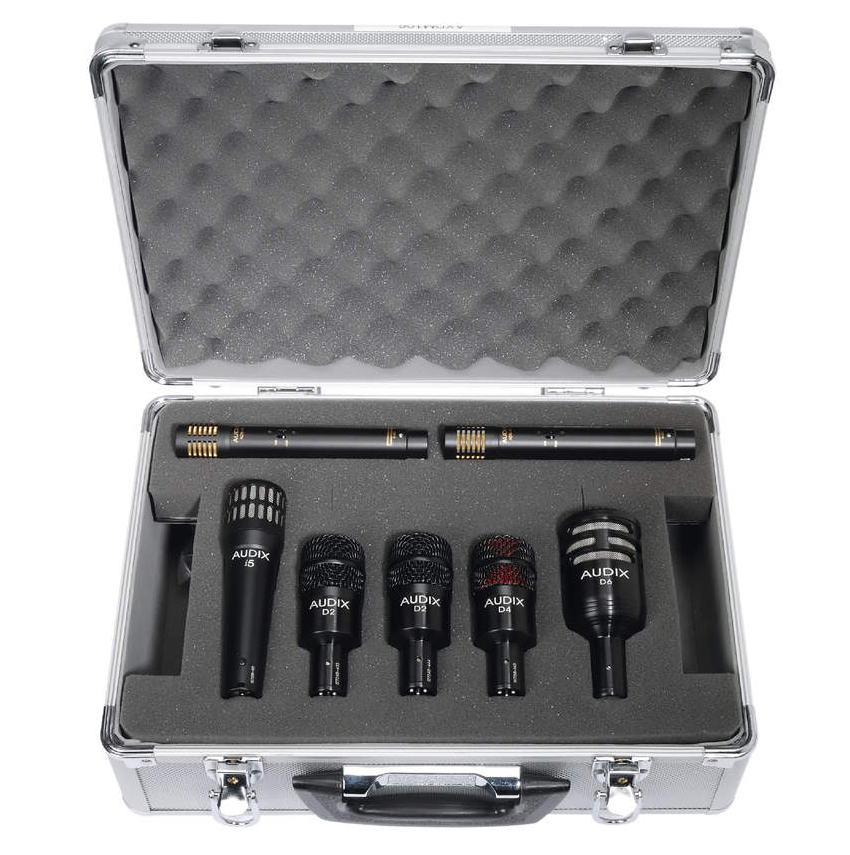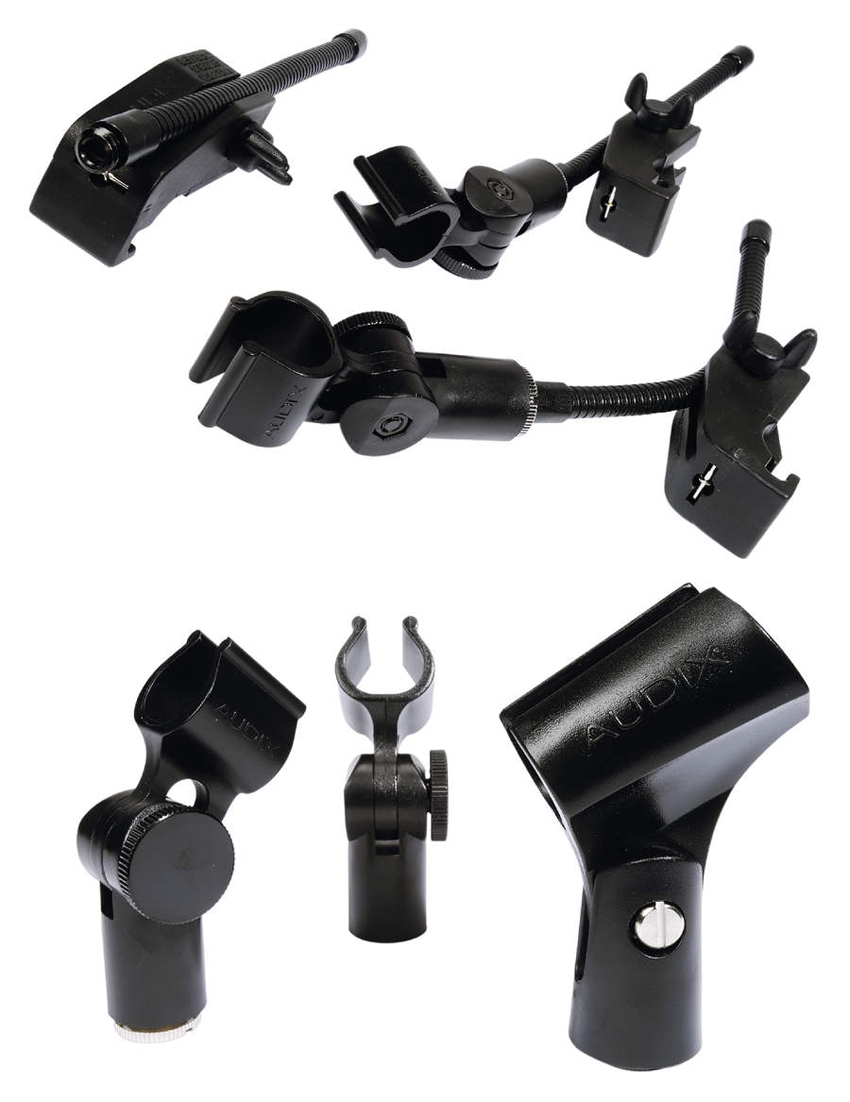MusicRadar Verdict
These mics would be at their best in large venues and loud onstage scenarios, where clarity is required. They would also seem to favour drummers who supply a strong incident signal (that is, give it some welly), so if you play with brushes behind a singer with an acoustic guitar, then they are not going to be ideal. If, however, you like to rock and have a decent PA rig at your disposal then they will doubtless give you years of service.
Pros
- +
Sturdy construction. Won't let you down in big and noisy venues.
Cons
- -
You'll need a decent PA rig. Not ideal for quiet players.
MusicRadar's got your back



Audix has been in the microphone business for over 20 years and is based in Oregon, USA. The majority of Audix´s microphones are made in-house, which is where the DP-7 drum kit mic set on review began life. The kit also boasts the distinction of being judged the best drum microphone product at the Musikmesse International Press Awards at the 2007 Frankfurt Music Fair.
Build
The DP-7 kit consists of seven microphones - five dynamic models tailored to capture the frequency ranges of snare, toms, floor toms and bass drum, and a pair of condenser mics for overhead and hi-hat duties. The mics are supplied in a custom-fit flight case, which also houses four D-Vice clip-on mic holders that clamp to the rim of a drum. The dynamic mics have been primarily designed for live use and are sturdily constructed to withstand the rigours of touring.
Catering for the bass drum is Audix´s D6 mic, a proven low-end mic that is equally at home in front of a bass cab as it is a bass drum. Cardioid in pattern, its frequency response ranges from 30Hz to 15KHz. Its casing is machined from solid aluminium and is finished in an anodised black coating.
Audix´s new i5 mic replaces the old D1 snare mic in the kit. The new mic is smaller than the D1, making it easier to position over the snare. It still wouldn´t qualify as being compact though, as it is only marginally smaller than a typical handheld vocal mic. Again cardioid in pattern, it is tuned to capture frequencies between 50Hz and 16KHz. The casing is made from cast zinc alloy and the mic can withstand sound pressure in excess of 140 decibels (for instance, a snare drum being rim-shotted by a 2B stick at point blank range).
Two D2 mics are supplied for the toms. They are small and stubby in comparison to the i-5 mic, and as such are a less obtrusive proposition to the player. Like the D6, the casing is milled from a single block of aluminium while a steel grill protects the business end. Hypercardioid in pattern (so with a narrower capture area), the frequency response is 44Hz to 18KHz.
The single D4 floor tom mic is physically very similar to the D2, being virtually identical in proportions. Also hypercardioid in pattern, its frequency response reaches a little lower than that of the D2, being 40Hz to 18KHz.
Two ADX-51 cardioid condenser mics are supplied for conveying the cymbal sounds. While being engineered differently from, and being a good deal more sensitive than, the dynamic models, the ADX-51s are still constructed to the same high standard. Being condenser mics, they require Phantom Power from the mixing desk to operate, and their frequency response ranges from 40Hz to 18KHz, to 150Hz to 18KHz with the low cut filter engaged.
Hands On
We tested the mics at a small venue with a full PA rig. The D6 performed at its strongest when giving the pedal really positive kicks - anything too subtle lacked attack. Due to the size of the venue and the volume of the snare, the i-5 mic was barely dialled in at the mixing desk. What it did reproduce suggests that it would have little trouble in placing the snare in a full-on mix in a big venue.
The D2s and D4 were at pretty much normal levels in the mix and gave strong performances. Experimenting with placing them above and below the toms brought interesting variations in the amount of resonance and presence the drums conveyed. Above the cymbals the two condensers gave typically crisp yet warm responses, letting the cymbals cut while still delivering body and tonality.
MusicRadar is the number one website for music-makers of all kinds, be they guitarists, drummers, keyboard players, DJs or producers...
- GEAR: We help musicians find the best gear with top-ranking gear round-ups and high-quality, authoritative reviews by a wide team of highly experienced experts.
- TIPS: We also provide tuition, from bite-sized tips to advanced work-outs and guidance from recognised musicians and stars.
- STARS: We talk to musicians and stars about their creative processes, and the nuts and bolts of their gear and technique. We give fans an insight into the craft of music-making that no other music website can.
“KIKI BOY 2025”: Frank Ocean appears to be teasing something... or other
“This is great. I knew I was getting to them! I’m so happy. It’s such a good feeling”: Spotify bites back at Kate Nash
“The included sample content is not only unique but sonically amazing, as it always was”: Spitfire Audio BBC Radiophonic Workshop review










